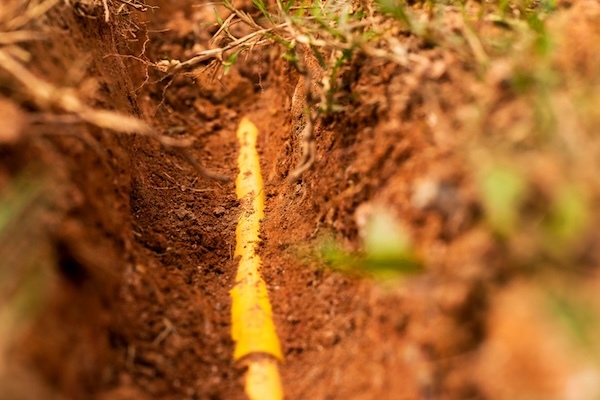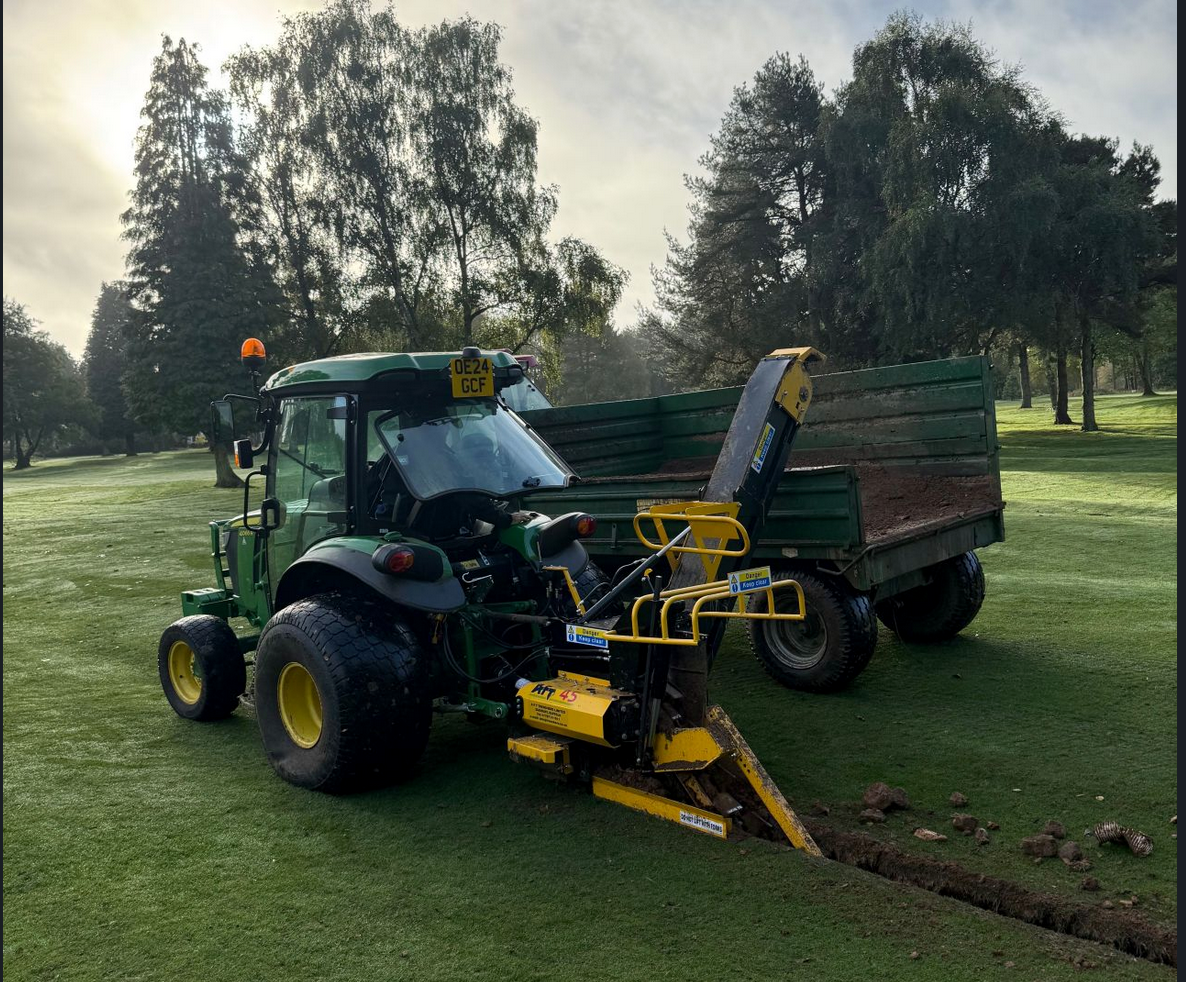
If you’re in the UK and you’re reading this on a device which makes use of a broadband connection (and, let’s be honest, you almost definitely are). Then you’re taking advantage of a nation-wide network of fibre optic cables, safely buried beneath the pavements we walk on and the roads we travel.
It’s easy to take technology of this kind for granted, but the truth of the matter is that, as well as showcasing the computing and coding skills needed to send gigabytes of information flowing seamlessly across hundreds or even thousands of miles, the fibre optic network of the UK is testament to a large scale and on-going civil engineering effort.
Put simply, every single fibre optic cable beneath our feet needed to have a hole dug in order for it to be placed safely and efficiently, and in this article we’ll look at the role trenching equipment has to play in what is still an on-going project.
Broadband fibre provision
According to a comprehensive selection of statistics pulled together by price comparison platform Uswitch, 97% of UK premises currently have a superfast, fibre broadband connection available to them. A connection of this kind provides a download speed of at least 30Mbps, but it is not the best option available, as it is generally delivered to premises via a combination of fibre optic cables and copper cables.
Provision of this kind is often referred to as fibre to the cabinet, (FTTC) as it involves fibre optic cables carrying data to a telephone exchange point, and then on to a phone cabinet, before being carried by copper cables to the premises.
The next step up from this in terms of provision is fibre to the premises (FTTP), which is also known as full fibre provision, as it involves the data being carried directly to the premises via fibre optic cables. Full fibre provision enables connections with speeds of as much as 1Gbps, and even higher in some cases.
In simple terms, the more the demand for data grows – via the roll-out of 5G, the on-going switch to hybrid working patterns and the growing demand for ‘Internet of Things’ (IoT) type connectivity, amongst other things – the more full fibre provision will be needed. At the moment, the percentage of UK households which have access to full fibre broadband is 62%, and it is the drive to push this figure higher which is fuelling much of the demand for more fibre optic cables to be laid.
One factor which is clearly notable when looking through the statistics is the disparity in full fibre broadband provision between urban and rural settings. The figures for different parts of the UK breakdown as follows:
- England – Urban areas have 63% provision, rural areas 45%
- Scotland – Urban areas have 61% provision and rural areas 35%
- Wales – Urban areas have 64% provision and rural areas 43%
Northern Ireland bucks the UK-wide trend somewhat by boasting 94% provision in urban areas and 84% in rural areas. Rolling full fibre provision out to the harder to reach rural areas in the UK will represent a major challenge over the next few years.
Project Gigabit

The response to these figures, and recognition of the fact that full fibre broadband needs to become the norm for the vast majority of households in the UK, came from the government in the form of Project Gigabit, which was launched in April 2022.
The aim of the project was to pull £5 billion worth of investment into the broadband infrastructure of the UK, with a target of bringing gigabit-capable coverage (i.e. the 1Gbps delivered by FTTP) to 85% of the UK, and to maximise available coverage to the 20% of the UK locations which are the hardest to reach, by 2025.
At the time of writing, Project Gigabit means that the fibre optic cable provision in large parts of England is due to be upgraded in the next two to seven years, an investment of £650 million. Meanwhile, over late 2023 and early 2024, Building Digital UK – a part of the Department for Science, Innovation and Technology – handed out Project Gigabit contracts worth over £714 million, intended to provide gigabit-capable broadband to as many as 370,000 premises.
In total, Project Gigabit has, to date, awarded 31 contracts worth more than £1.3 billion, with the intention of delivering gigabit-capable coverage to 780,000 premises across the UK.
Legislation covering trenches
Some of this nation-wide upgrading of the fibre optic network will take place via access to existing cabling but much of it, particularly in more remote and difficult to reach areas, will call for new cables to be laid. As might be expected, there are strict rules in place when it comes to digging trenches and laying cables.
These include the fact that any new duct infrastructure (the duct being the protective casing which carries most underground cabling) needed as part of a network build needs to be configured to be able to support a minimum of three competing infrastructure providers utilising technologies of a similar size and/or physical makeup.
In other words, any new trench dug to support the expansion of the fibre optic network needs to be highly precise in terms of depth and width, which is why trenching equipment able to deliver precision trenches needs to play a role in the provision of new fibre optic cables. The wider legislation governing the position of underground infrastructure alongside fibre optic cables is highly complex, and underlines why simply hacking away at the ground with a pick axe and shovel is really not a viable option.
The need for accuracy

The body which has overall control of the network of cables and ducts, as well as the cabinets and other infrastructure which support the UK broadband network, is called Openreach, and it has to provide access to this network to other service and infrastructure providers.
The guidelines published by Openreach this year, intended for anyone developing a new site as part of the Openreach network, underline just how complex the process of putting new cables in place can be.
What the average person might not know, for example, is that there are strict rules in place governing the placement of utilities, mains and plant provision in trenches beneath the ground. For example, as set out by the StreetworksUK website, different types of ducting have to be buried within different depth ranges, as follows:
- Electricity cables – high voltage cables need to be buried between 450mm and 1200mm, low voltage cables at 450mm
- Cable TV – 250mm to 350mm
- Gas provision – 600mm
- Water provision – 750mm
- Telecommunications provision – 250mm
Not only is the depth of the infrastructure prescribed, but also the placement, with each specific type of ducting, cable or pipe having to be placed at a certain point across the width of a footpath. In addition to this, Openreach set out general principles for putting ducting in place which include the fact that all trenches need to be as straight as possible, and should be backfilled to a minimum thickness of 75mm.
It’s not only the accuracy that’s important though, the speed at which these trenchers can be made is greating increased by using high quality trenching machinery such as the AFT45 Trencher.
In a recent project, laying broadband in Norfolk to connect up 7 towns with fibre optic, 100,000 metres was achieved in 5 years with the AFT45 “It would have taken 25 years with a mini digger”, says Clive (C&G Trenching).
The demand for trenchers
As the UK fibre optic network is upgraded and expanded, the need for trenching which is completely accurate to pre-set metrics of depth and width, as well as being simple to back fill at speed and unerringly straight over any given distance, is only going to grow.
In rural areas in particular, fibre optic cable may need to be placed in hard to reach spots, and trenching equipment is the ideal solution for digging difficult trenches in hard to access spots without risking any decline in accuracy or quality.
